The most common flowers that come to mind when we think of flowers are roses, daisies, and sunflowers. Yet, have you ever considered flowers whose names begin with the letter J?
These flowers are just as lovely and special, despite not being as common. We’ll delve into the world of flowers that begin with J in this blog article and uncover some unsung treasures just waiting to be appreciated.
This post is for you if you’re interested in flowers or just want to learn more.
Keep Reading:
- Flowers That Start With E
- Flowers That Start With F
- Flowers That Start With G
- Flowers That Start With H
- Flowers That Start With I
List Of Flowers That Start With J
1. Jumping Cholla
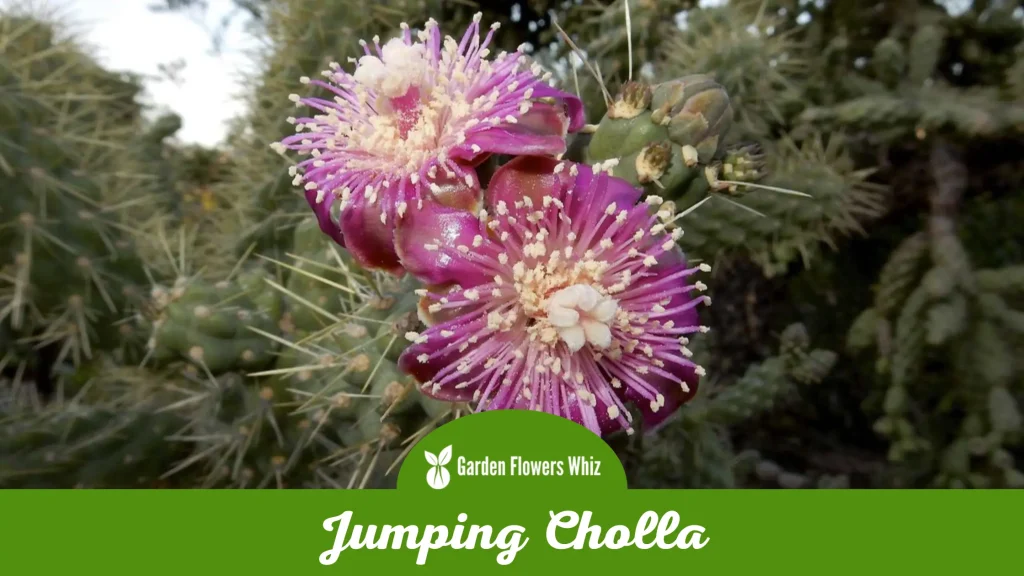
The Cactaceae family of plants includes the Jumping Cholla, sometimes referred to as the “hanging chain cholla” or “teddy bear cholla,” which is a special and peculiar desert plant.
Its cylindrical stem segments are coated with spiky, barbed bristles that stick to skin and clothing readily, giving it the moniker “jumping” cholla. It is a native of the southwest United States and northern Mexico.
The Jumping Cholla produces stunning, brilliant pink flowers in late spring and early summer despite its thorny skin.
Small and abundant, the flowers stand out against the plant’s greenish-yellow stem segments with their vivid color.
Bees and other pollinators depend on the nectar from the Jumping Cholla’s flowers, and small mammals and birds eat the plant’s fruits.
The Jumping Cholla, which may be found in xeriscape gardens and desert landscapes, has gained popularity as a decorative plant in arid areas due to its distinctive look and ecological significance.
Because of its spiky nature, it should be handled carefully because the barbs can easily snag on skin and clothing.
2. Joseph’s Coat
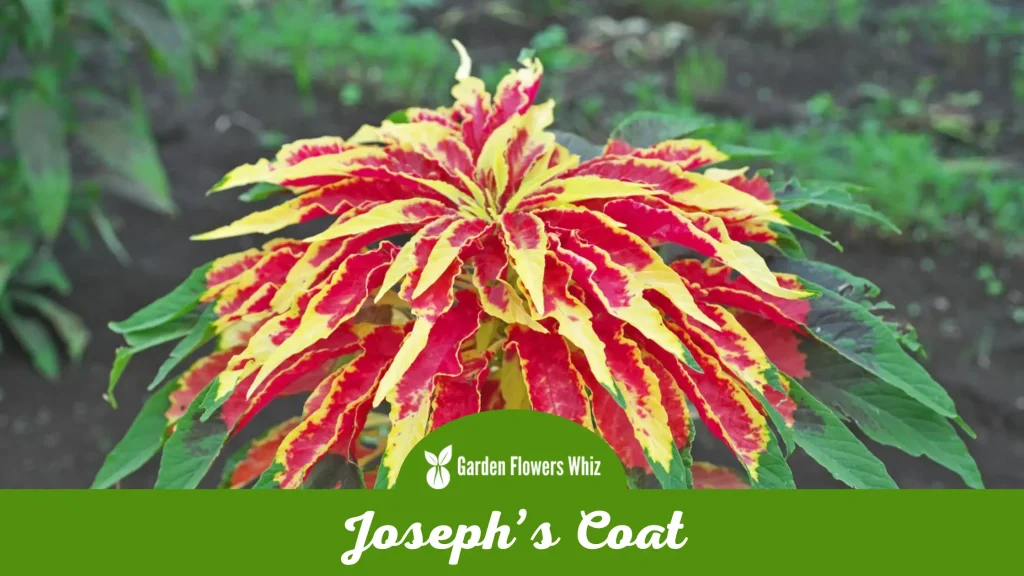
The annual plant Joseph’s Coat, commonly known as “Amaranthus tricolour,” is a vibrant and eye-catching member of the Amaranthaceae family.
Although it originated in the Americas, it has been brought to and naturalized over most of the rest of the world. The plant is distinguished by its vibrantly hued leaves, which come in a variety of green, yellow, red, and purple tones, making for a cheery and colorful display in the yard.
The plant is simple to cultivate and does best in areas that are warm, sunny, and have well-draining soil. Moreover, it can withstand drought, making it a great option for hot, arid locations.
Joseph’s Coat has both ornamental and culinary uses. In some cultures, salads, stir-fries, and soups frequently include the leaves and young shoots of Joseph’s Coat.
Gardeners, landscapers, and plant enthusiasts all love Joseph’s Coat because it is a useful and attractive plant. It is a great option for adding interest and variety to any garden or landscape because of its eye-catching hues and low maintenance requirements.
3. Jonquil
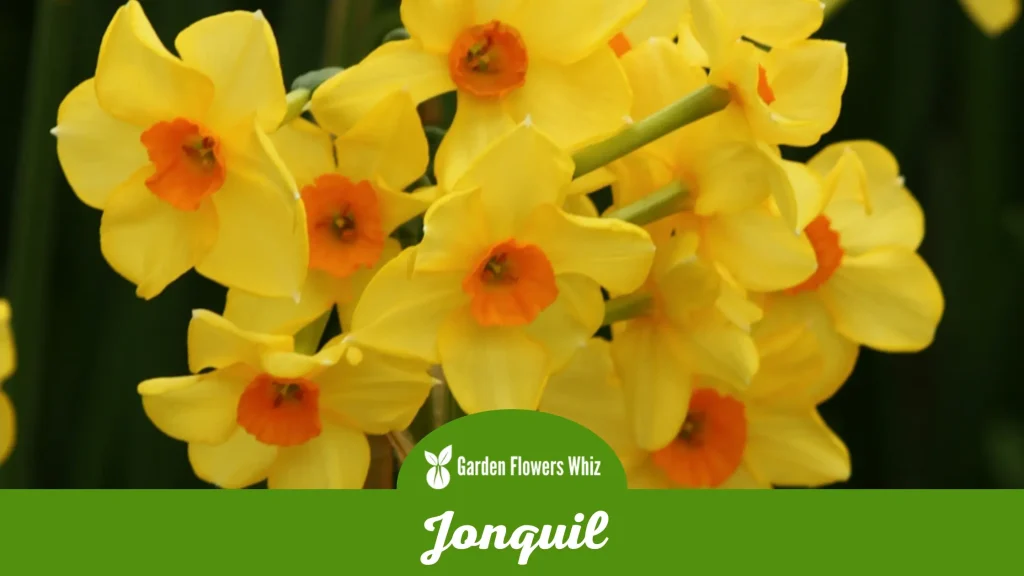
The Narcissus genus includes the lovely and fragrant spring flowering bulb known as the jonquil. Although it originated in the Mediterranean, it has been widely farmed and naturalized around the world.
The beautiful, trumpet-shaped flowers that jonquils are famous for growing in clusters of 3-5 blossoms per stalk. The blooms’ sweet, spicy scent is highly sought after in perfumery, and they come in a variety of colors, from white to creamy yellow.
Jonquils are simple to grow and need full to partial sun and well-drained soil. They are a preferred option for native plantings, rock gardens, and garden borders.
Because of their lengthy vase life and fragrant scent, jonquils are frequently used in cut flower arrangements.
Jonquils have been employed in several civilizations for therapeutic purposes in addition to their decorative significance. The lovely and endearing jonquil flower gives any garden or floral arrangement a touch of elegance and scent.
4. Johnson’s Beehive Cactus
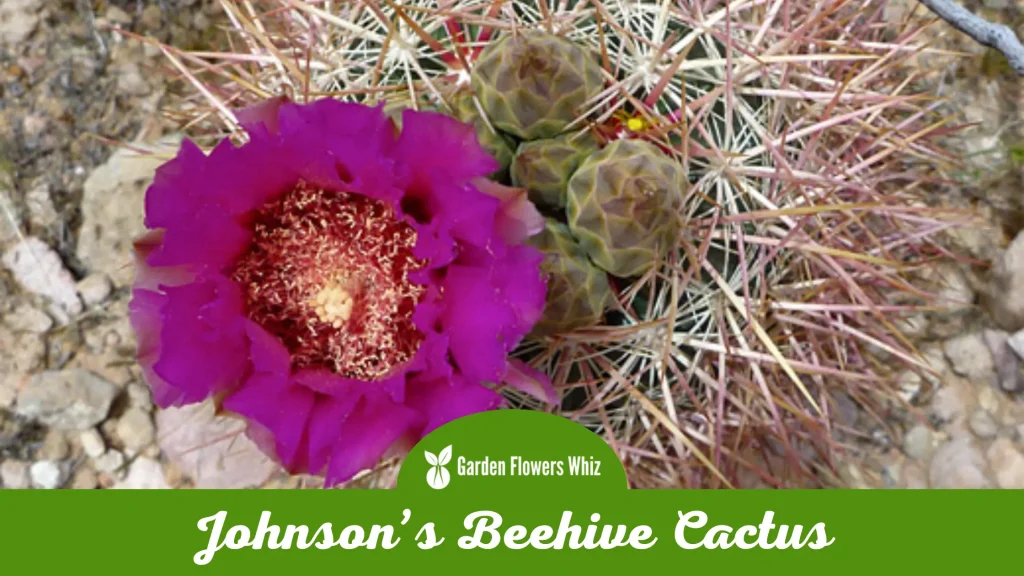
Ferocactus johnsonii, often known as Johnson’s Beehive Cactus, is a rare and distinctive cactus species that are indigenous to the Sonoran Desert of California and Mexico.
Its unusual shape, which resembles a beehive or barrel, gave rise to its name. The cactus has thick, ribbed stems with white hairs and sharp spines that can reach heights of 5 feet and a width of 3 feet.
Bright yellow to orange-red flowers bloom at the top of the Johnson’s Beehive Cactus throughout the late spring and early summer season.
The big, beautiful blossoms are a favorite of bees and other pollinators because they are so attractive. Little, edible fruits that the plant produces after flowering are relished by both animals and people.
Slow-growing and long-lived, the Johnson’s Beehive Cactus is highly prized by cactus collectors and enthusiasts. Nonetheless, because of its scarcity and susceptibility to habitat disturbance, it is protected by law and is categorized as a threatened species.
5. Joe Pye Weed
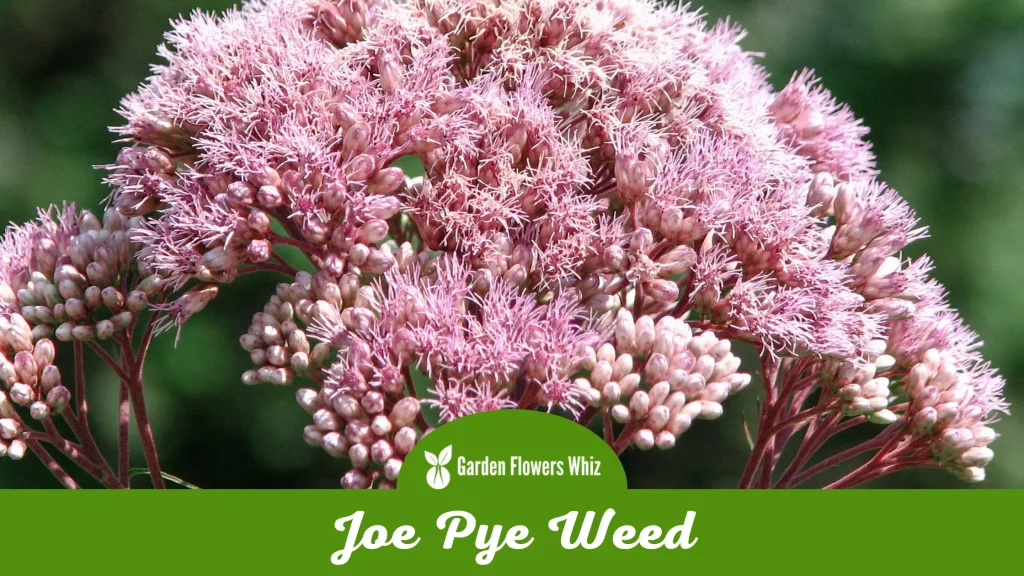
The tall and flamboyant perennial plant known as Joe Pye Weed, or “Eutrochium purpureum,” is a native of North America. It has huge, wide leaves that are grouped in whorls along the stem and can reach heights of up to 6 feet.
From mid-summer to early fall, the plant bears clusters of pink or purple blooms that serve as an important source of nectar for bees, butterflies, and other pollinators.
Joe Pye Weed grows well in moist to wet soil in full sun to moderate shade and is simple to grow. It is a great option for attracting wildlife to the garden as well as for rain gardens, meadows, and naturalized areas.
A burst of color and ecological value is added by the lovely and adaptable Joe Pye Weed plant to any garden or landscape.
6. Jewelweed

Impatiens capensis, sometimes referred to as “jewelweed,” is a native annual plant in North America that is prized for both its exquisite beauty and therapeutic benefits.
The plant can reach a height of 5 feet and has alternating, oval-shaped leaves. It is typically found in moist wooded environments, near streams, and in soggy meadows.
Hummingbirds and bees are drawn to the plant’s tiny, jewel-like blossoms, which are produced in orange or yellow and have a trumpet-like form.
As a result of the substances found in the plant’s stems and leaves, which have a cooling and soothing effect on the skin, it is a well-liked natural cure for irritated or itchy skin.
Jewelweed is a lovely and practical plant that gives color and beauty to any garden or natural environment in addition to its medical benefits.
It is an excellent choice for forest gardens, rain gardens, and naturalized plants because it is simple to grow and thrives in moist, gloomy situations.
7. Jerusalem Sage

Jerusalem Sage, also called “Phlomis fruticosa,” is a perennial plant that is indigenous to the Mediterranean area and tolerant of dryness.
It belongs to the mint family and is renowned for its distinctive looks and decorative value. The plant produces spikes of vivid yellow blooms in the late spring and early summer, and its gray-green leaves are covered in a velvety down.
It is simple to grow Jerusalem sage and needs full sun and well-drained soil. For xeriscaping, rock gardens, native areas, and luring pollinators to the garden, it is a fantastic option.
A touch of the Mediterranean is added to any garden or landscape by the lovely and hardy Jerusalem sage.
It is a well-liked option for gardeners searching for a low-maintenance plant with year-round interest because of its distinctive appearance and drought-tolerant characteristics.
8. Jerusalem Artichoke
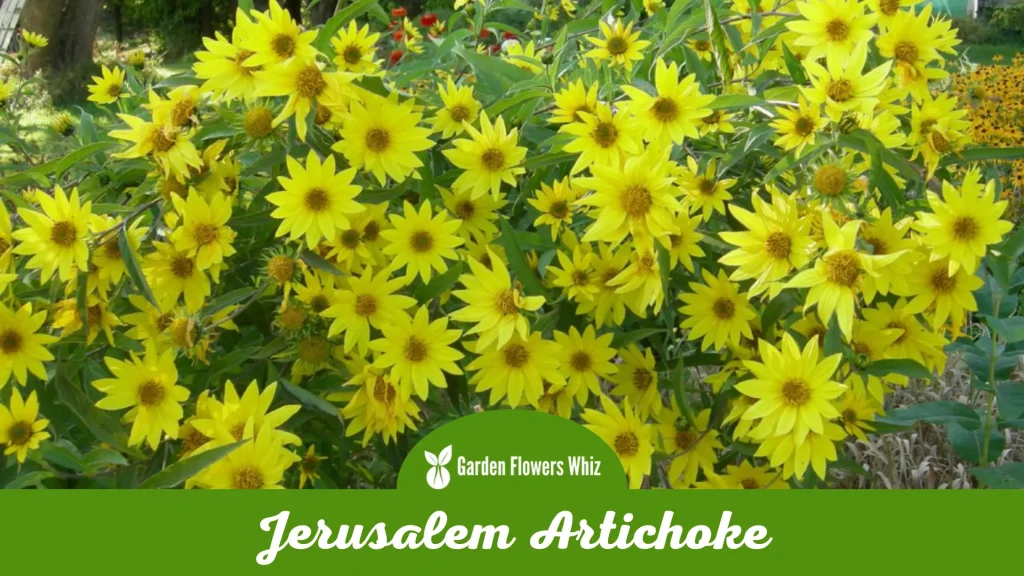
Helianthus tuberosus, often known as the Jerusalem artichoke, is a kind of sunflower that is grown for its edible tubers. Native American tribes who resided in the eastern half of the continent used the plant, which is native to North America, as a main source of sustenance.
It was brought to Europe in the 17th century and has since spread around the world as a well-liked food crop.
Up to 10 feet tall, the Jerusalem artichoke has enormous yellow blossoms that resemble other sunflowers. The underground tubers have an earthy, potato-like flavor and a high fiber content.
They are a common element in soups, stews, and other cuisines and can be cooked, roasted, or mashed. In addition to their culinary applications, Jerusalem artichokes have a number of possible health advantages, including as improving digestive health and lowering blood sugar levels.
Excellent addition to any garden or farm, the Jerusalem artichoke is a hardy and nutritious plant.
9. Jasmine
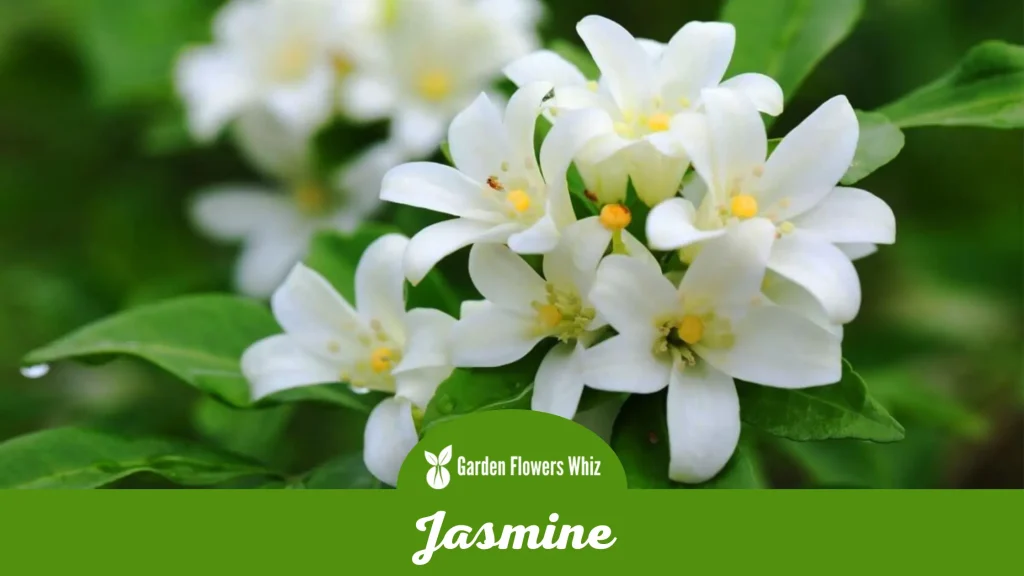
The olive family includes the aromatic flowering plant known as jasmine. It is widely cultivated and has its origins in the tropical and subtropical regions of Eurasia, Australasia, and Oceania. It is also known for its lovely white or yellow blossoms and delicious, exotic aroma.
Little and fragile, jasmine blossoms have white or yellow petals and a strong, sweet aroma. They are frequently utilized in teas, other beverages, cosmetics, soaps, and other beauty goods.
Jasmine is frequently used in wedding ceremonies and other romantic celebrations since it is regarded as symbolic of love, sensuality, and fertility in many cultures.
Any garden or landscape benefits from the color and aroma that jasmine brings with it. While its culinary and cosmetic uses make it a useful addition to any home, its sweet scent and calming qualities make it a popular option for aromatherapy and other holistic health practices.
10. Japanese Water Iris
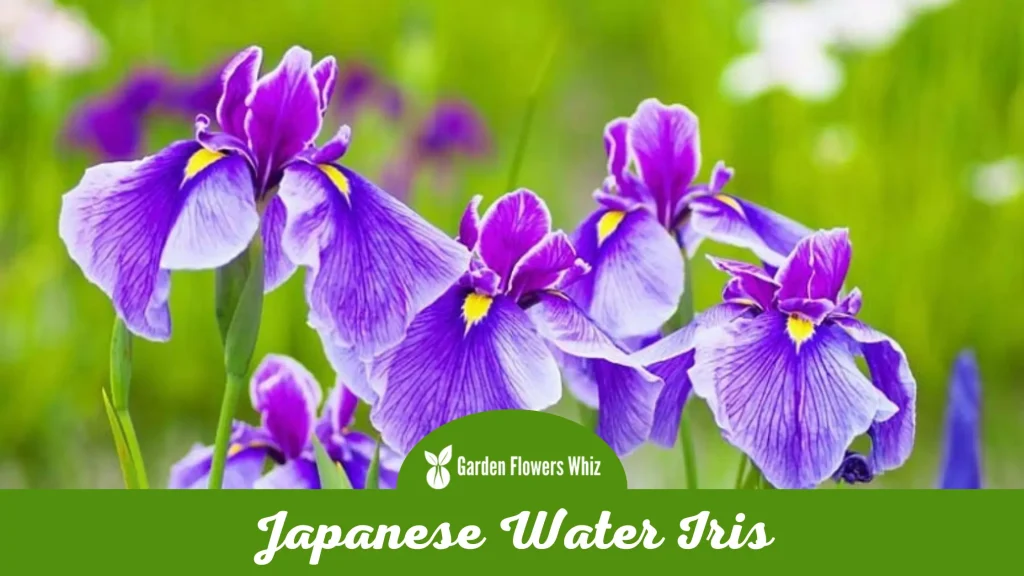
The gorgeous flowering plant known as the Japanese Water Iris, also called “Iris ensata,” is indigenous to Japan and other regions of Asia. The plant is frequently found along the sides of streams and ponds and, as its name suggests, thrives in moist or bog-like environments.
The blossom, which can be found in a variety of hues such as blue, purple, white, and pink, is what makes the plant distinctive.
Hardy and low-maintenance, Japanese Water Iris can be grown in a range of environments, including water gardens, meadows, and borders.
It should be planted in well-drained soil that is rich in organic matter because it needs plenty of sunlight and moisture to thrive.
11. Japanese Toad Lily
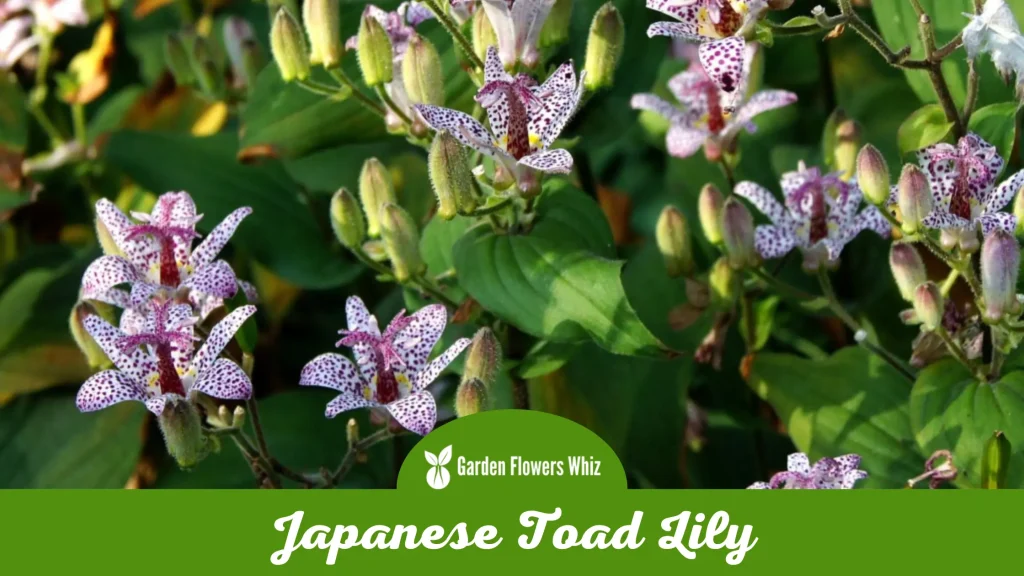
The Japanese Toad Lily, also called “Tricyrtis hirta,” is a rare and lovely flowering plant that is indigenous to Japan and other regions of East Asia.
It is frequently known as the “toad lily” because of the speckled, toad-like appearance of its blossoms, which come in purple, pink, and white hues.
Hardy and low-maintenance, the Japanese toad lily flourishes in the shaded areas of woodlands. It grows well in a range of environments, including rock gardens, borders, and pots. It enjoys moist, well-drained soil.
12. Japanese Kerria
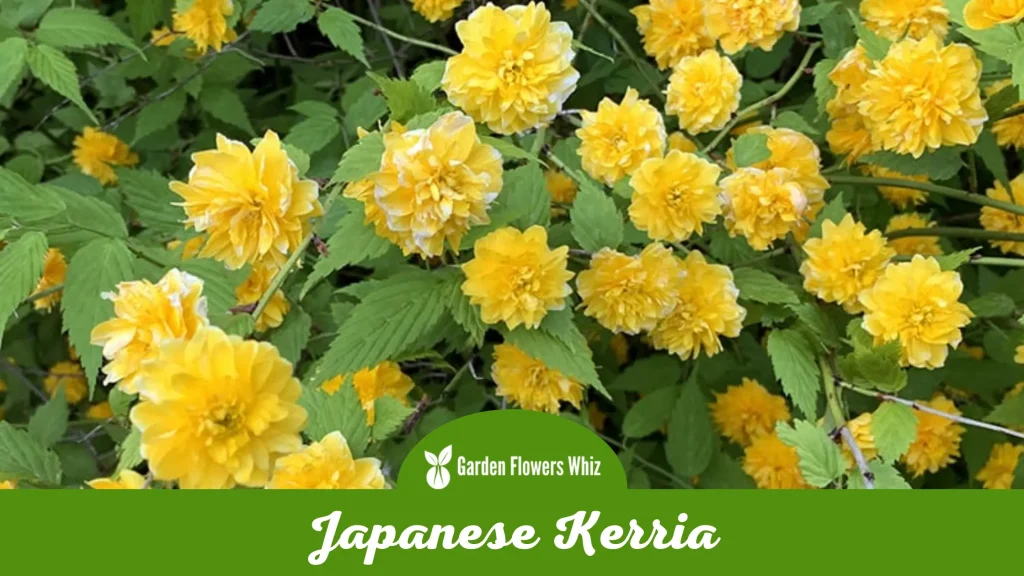
Kerria japonica, often known as the Japanese Kerria, is a deciduous shrub that is indigenous to Korea, China, and Japan. It is a well-liked ornamental plant that blooms in the spring and summer and is distinguished by its bright yellow, pom-pom-shaped flowers.
Hardy and low-maintenance, the Japanese Kerria can be grown in a range of locations, including borders, hedges, containers, and rock gardens. Although it can survive a variety of soil types and climates, it likes full sun to partial shade and well-drained soil.
Its sunny yellow blossoms are a sure indicator of spring and summer, and both novice and seasoned gardeners will love it for its hardiness.
13. Japanese Iris

Beautiful flowering plants are indigenous to Asia, and the Japanese Iris, also known as “Iris ensata,” is one of them. Large, beautiful flowers in a variety of hues, including purple, pink, white, and blue, are one of the main reasons it is planted.
Japanese iris is a durable, low-maintenance plant that is simple to cultivate in a variety of locations, including borders, pots, and water gardens.
It prefers moist, well-drained soil that is rich in organic materials, full sun as opposed to partial shade, and both. In Japanese culture, the Japanese Iris has a variety of cultural and symbolic implications in addition to its visual appeal.
In Japanese mythology, the iris is linked to the sun goddess and represents strength, tenacity, and purity. The plant, which is regarded as a representation of grace and elegance in Japanese culture, is also frequently used in traditional flower arrangements.
It is popular among both gardeners and flower enthusiasts due to its stunning blossoms and significant cultural history.
14. Japanese Barberry
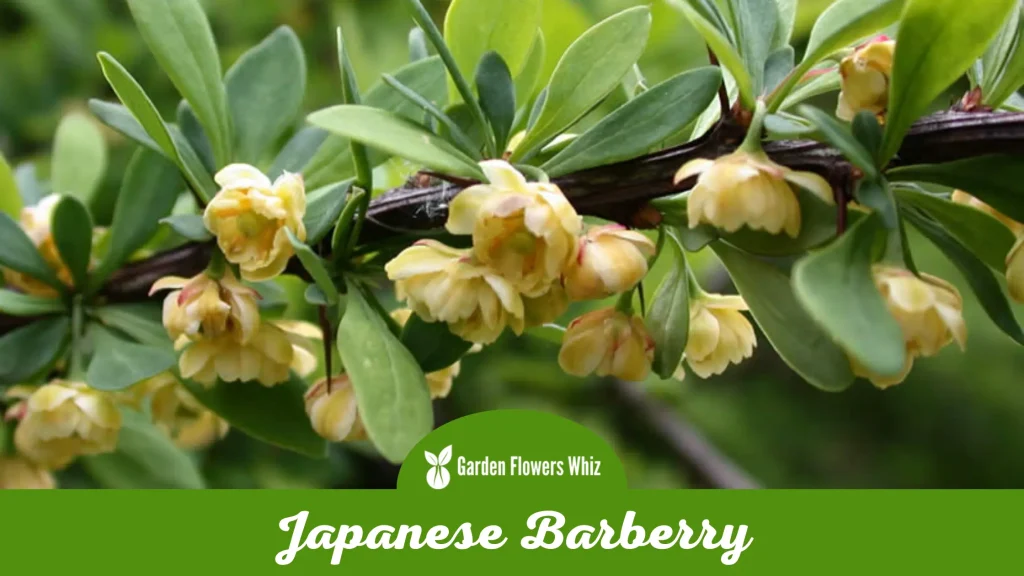
A deciduous shrub that is indigenous to Japan and other regions of Asia, the Japanese Barberry, also known as “Berberis thunbergii,” is. It is a well-liked ornamental plant with stunning and unusual foliage that can be any shade from deep red to bright green.
A durable, low-maintenance plant, the Japanese Barberry is simple to grow in a range of locations, including pots, rock gardens, hedges, and borders.
Although it can survive a variety of soil types and conditions, it favours full sun to light shade and well-drained soil.
It is important to keep in mind, nevertheless, that the Japanese Barberry is a plant that is regarded as a nuisance in some regions due to its invasive nature.
15. Japanese Anemone

Anemone hupehensis, popularly known as the Japanese Anemone, is a stunning perennial plant that is indigenous to China and other regions of Asia.
It is a well-liked garden plant, and people grow it for its gorgeous, delicate flowers, which bloom in the late summer and early fall.
The Japanese anemone is a hardy, low-maintenance flower that may be grown in a range of locations, including woodland gardens, rock gardens, borders, and containers.
It favors organically rich, wet soil with good drainage and some shade.
16. Jamesia Americana
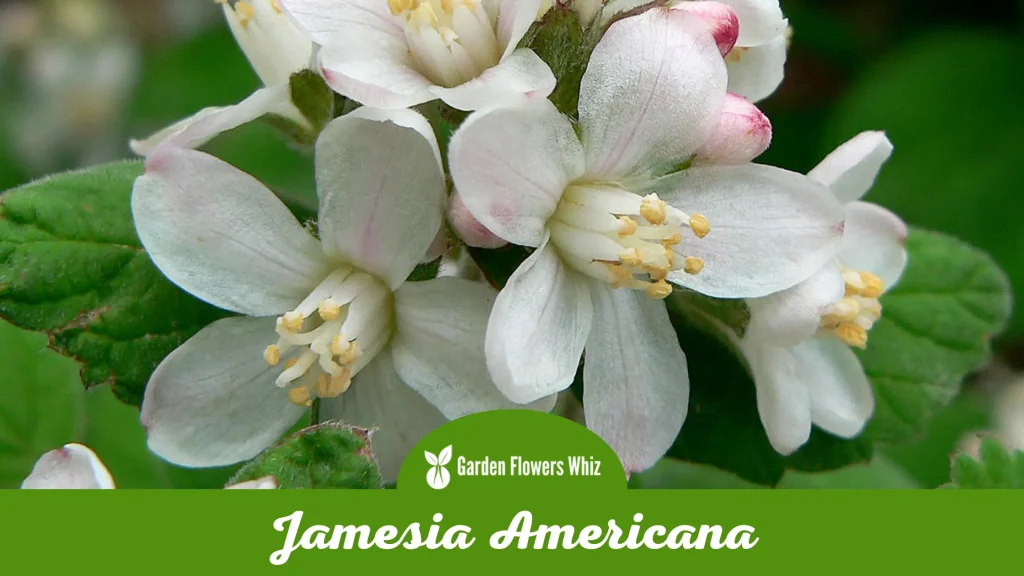
A native of the western United States, Jamesia Americana, or simply “Jamesia,” is a deciduous shrub. It is a little, low-growing plant renowned for its brilliant, white flowers as well as its lovely foliage.
Jamesia is a hardy, low-maintenance plant that grows well in a range of conditions, including rock gardens, borders, pots, and mass plantings.
It favors well-drained, slightly acidic soil over land with partial shade and full sun. Jamesia has several cultural and ecological values in addition to its ornamental value.
Because of the numerous pollinators that are drawn to its flowers, including bees and butterflies, it is a crucial plant for biodiversity.
In addition to being a favorite of gardeners and flower aficionados alike due to its brilliant flowers and lovely foliage, it is a significant component of the natural landscape due to its cultural and ecological qualities.
17. Jacob’s Ladder
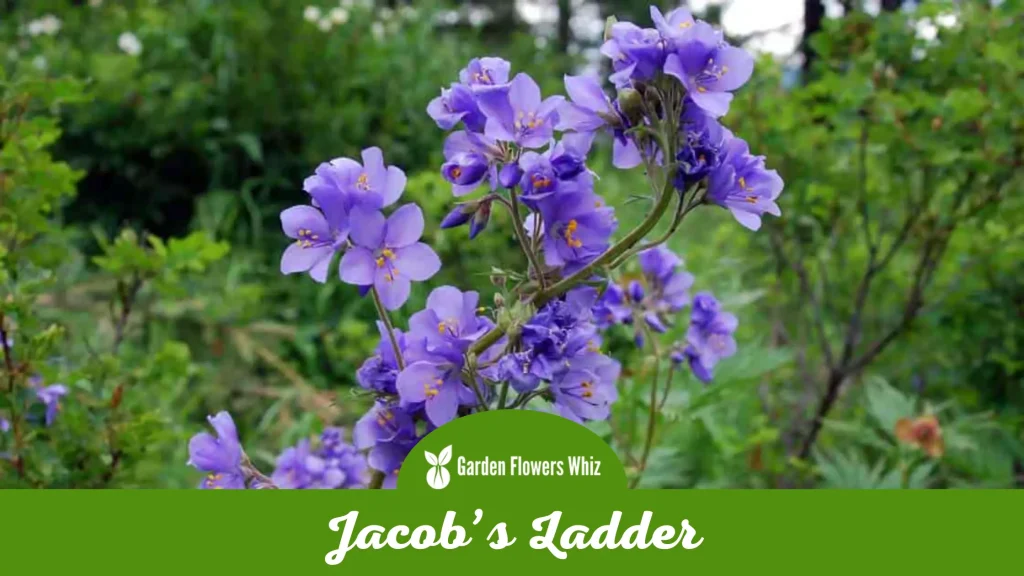
The hardy perennial plant called “Jacob’s Ladder,” also known by the scientific name “Polemonium caeruleum,” is a native of western Asia and Europe. It is a well-liked garden plant with clusters of blue or purple flowers and appealing, fern-like foliage.
Low-maintenance Jacob’s Ladder is simple to grow in a range of environments, including borders, rock gardens, woodland gardens, and containers.
It prefers moist, well-drained soil that is high in organic matter and light shade.
18. Jaborosa
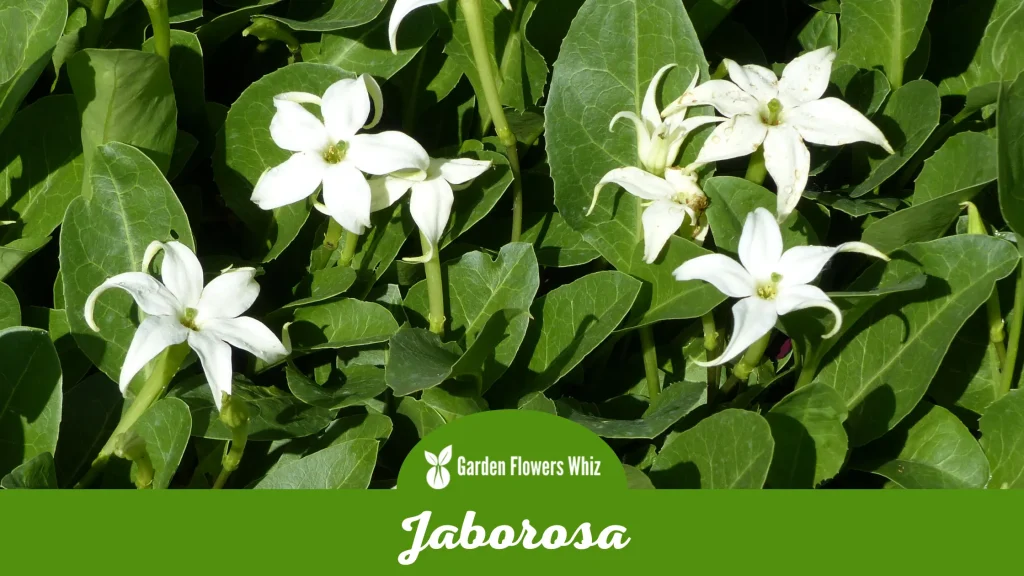
The plant genus Jaborosa is indigenous to South America and belongs to the Solanaceae family. It is a little herbaceous plant that is well-known for its bell-shaped, delicate flowers in the colors white, yellow, and purple.
Jaborosa is a low-maintenance plant that may be grown in a range of locations, including pots, hanging baskets, rock gardens, and borders. It favors full sun as opposed to partial shade, well-drained soil that is somewhat acidic, and both.
In Summary
The letter J offers a wide range of alternatives, from the stunning and exotic to the delicate and endearing, as we near the conclusion of our examination of flowers that begin with J.
Yet, these blooms also serve as a reminder of the interconnectivity of the natural world and the part that each plant and organism plays in our ecosystem, in addition to their own intrinsic beauty.
Every flower has a special tale to tell, from how it develops and adapts to its surroundings to how it gives food and shelter to the creatures that depend on it.

Stacey Hernandez is a seasoned botanist with over 16 years of experience in the field. Her passion for plants and their intricate workings began at a young age, and she has since devoted her life to studying and understanding them.
Stacey’s expertise extends to a wide range of plant species, from delicate flowers to towering trees. As the founder of Garden Flowers Whiz, Stacey has created a platform for plant enthusiasts to seek guidance and advice.
Her website is a go-to resource for those seeking answers to their gardening dilemmas, whether it’s how to care for a particular plant or which species to choose for a specific climate.
